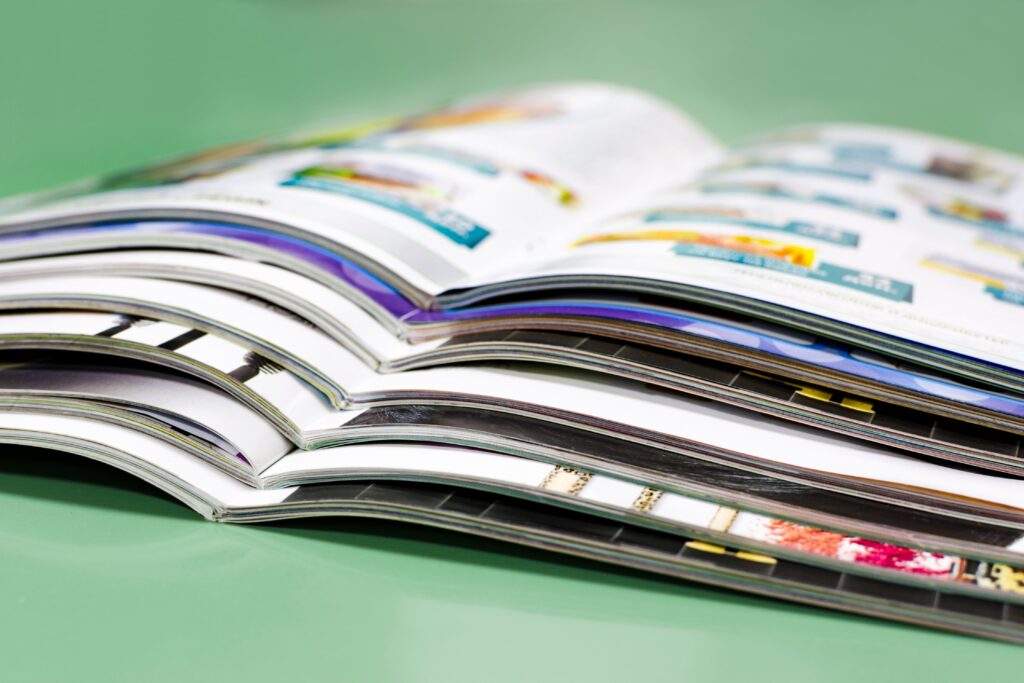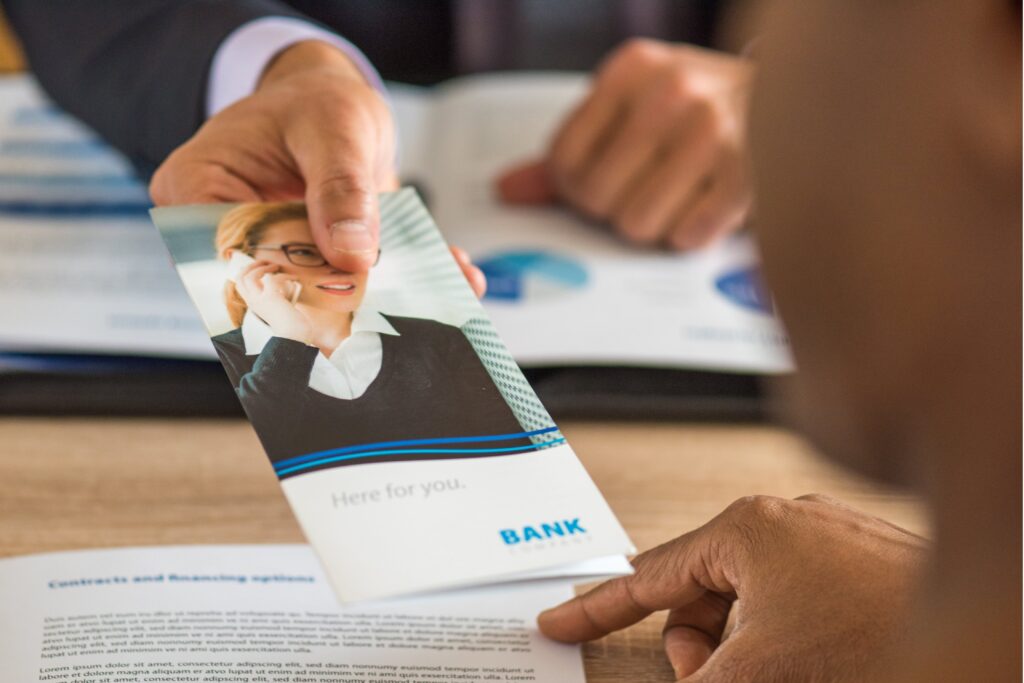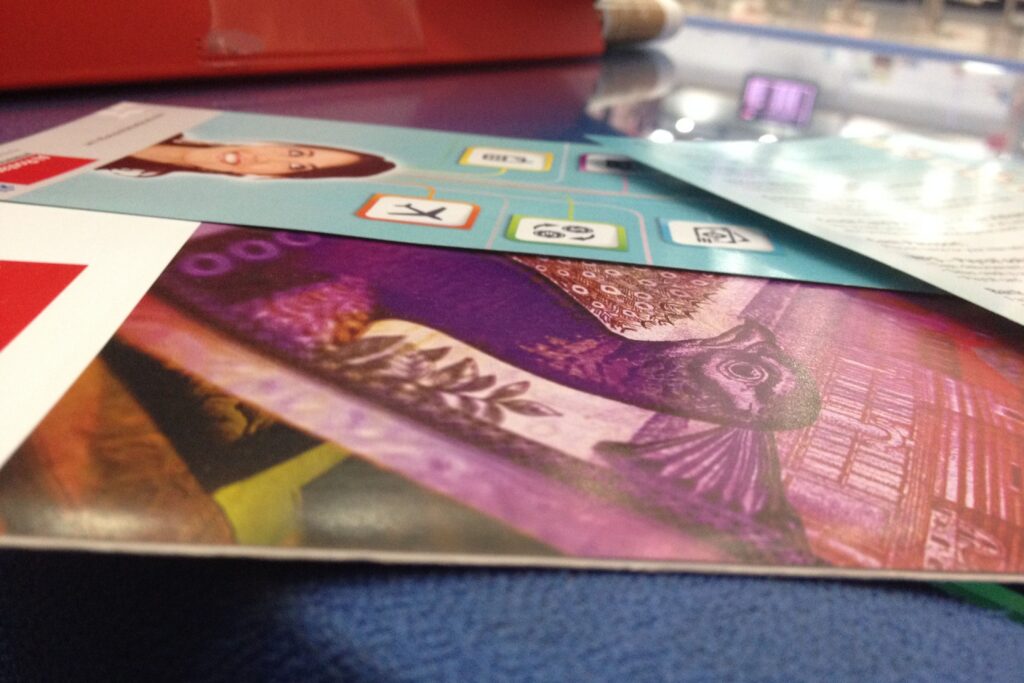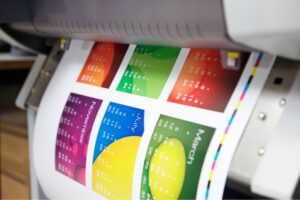5 Creative Ideas For Using Brochures In Your Print Marketing Strategy
6 min read
Are you looking for unique ways to enhance your print marketing strategy? Brochures can be a powerful tool to captivate your audience and leave a lasting impression. If you’re tired of traditional approaches, it’s time to think outside the box and explore the creative potential of brochures.
In today’s digital age, print marketing often takes a backseat to online advertising. However, brochures remain a versatile and effective medium for reaching your target market. They offer a tangible and tactile experience that digital ads simply cannot replicate. By incorporating innovative ideas into your brochure design, you can elevate your brand and stand out from the competition.
If you’re ready to breathe new life into your print marketing strategy, look no further than brochures. In this article, we will explore five creative ideas for using brochures that will help you engage your audience, increase brand awareness, and drive conversions. Get ready to unleash the power of brochures in your marketing efforts.
1. Interactive Brochures
Interactive brochures are marketing materials that utilize various interactive features to engage and captivate customers. These brochures go beyond the traditional static format by incorporating elements such as QR codes, augmented reality, and interactive videos, among others.
One key benefit of interactive brochures is their ability to grab customers’ attention and keep them engaged. By offering a more dynamic and immersive experience, these brochures stand out from the crowd and make a lasting impression on potential clients. Interactive features like QR codes allow customers to easily access additional information or special offers by scanning the code with their devices. Augmented reality brings static images to life, enabling customers to explore products or services in a virtual environment.
In addition to attracting and entertaining customers, interactive brochures enhance their overall experience. By interacting with the brochure, customers actively participate in the information-gathering process. This hands-on approach enables them to fully understand the features and benefits of the advertised products or services, promoting better decision-making. Moreover, interactive brochures provide an opportunity for businesses to collect valuable data and gain insights into customer preferences and behaviors.

2. Storytelling Brochures
Storytelling plays a crucial role in print marketing as it enables businesses to connect with their target audience on an emotional level and effectively communicate their brand message. Incorporating storytelling elements in brochures can greatly enhance their impact and help captivate readers. Here are some key points to consider:
1. Begin with a compelling narrative: Start the brochure with an engaging story that grabs the reader’s attention. This can be a personal experience, a relatable situation, or a fictional scenario that resonates with the target audience.
2. Use relatable characters: Introduce relatable characters in the brochure who represent the target audience. This helps readers empathize with the story and feel a personal connection.
3. Build a problem and solution structure: Present a problem that the target audience can relate to, and then offer a solution through your product or service. This creates a narrative arc that keeps readers engaged and interested in exploring further.
4. Use visuals to enhance the story: Incorporate relevant images, graphics, and illustrations that support the storytelling elements and add visual appeal to the brochure. Visual cues can help convey emotions and reinforce the brand message.
5. Keep it concise yet impactful: Brochures have limited space, so it is essential to convey the storytelling elements effectively in a concise manner. Focus on key points, highlight benefits, and include a call to action that urges readers to take the desired action.
Effective storytelling in brochures can have a significant impact on brand perception and customer connection. When readers engage with a compelling story, they are more likely to remember the brand, feel a sense of trust and loyalty, and ultimately become customers. Storytelling helps create an emotional connection, making the brand more relatable and memorable. By incorporating storytelling elements in brochures, businesses can effectively communicate their brand narrative and leave a lasting impression on their target audience.
3. Mini Brochures
Mini brochures are compact and lightweight promotional materials that are used to convey information about a product, service, or event. These brochures typically consist of a single sheet of paper that is folded into a small booklet or pamphlet. They offer several advantages over traditional brochures.
One of the main advantages of mini brochures is their portability. Their small size allows them to be easily carried in pockets, bags, or handed out on the street. This makes them ideal for trade shows, events, or sales meetings where space is limited.
Mini brochures also have a higher chance of being read. Their concise format presents information in a visually appealing way, making it easier for the reader to quickly grasp the key points. This can be particularly advantageous for time-sensitive promotions or when targeting busy individuals who may not have the time or patience to read longer materials.
The target audience for mini brochures can vary depending on the purpose of the brochure. They are commonly used by businesses to communicate with potential customers, tourists, or event attendees. They can also be used by educational institutions, non-profit organizations, or government agencies to deliver important messages to a wide audience.
When it comes to designing and distributing mini brochures, creativity is key. Utilizing eye-catching graphics, bold colors, and concise yet impactful messaging can help grab the attention of the target audience. Exploring unique ways of distribution, such as placing them in coffee shops, libraries, or local businesses, can also increase the chances of reaching the intended recipients.

4. Personalized Brochures
Personalized brochures play an integral role in successful marketing strategies. The importance of personalization in marketing cannot be overstated. By tailoring brochures to individual customers based on their specific interests and preferences, businesses can establish a deeper connection with their target audience.
To personalize brochures effectively, leveraging customer data is essential. This data can include information such as demographics, purchase history, and browsing behavior. By analyzing this data, marketers can gain valuable insights into customers’ preferences and create brochures that resonate with their needs.
The benefits of personalized brochures are numerous, particularly in building customer relationships. By delivering tailored content, businesses can demonstrate that they understand their customers’ unique needs. This fosters a sense of trust and loyalty, enhancing the likelihood of repeat purchases and word-of-mouth referrals.
Several successful personalized brochure campaigns serve as prime examples of the power of personalization. Brands like Amazon, Netflix, and Spotify have leveraged technology and customer data to provide personalized recommendations and offers. These campaigns have resulted in increased customer engagement, satisfaction, and ultimately, higher conversion rates.
5. Brochure as a Direct Mail Piece
Brochures serve as an effective direct mail piece for several reasons. First and foremost, brochures are tangible and physical marketing materials that allow businesses to convey their message directly to potential customers. Unlike digital advertisements that can easily be ignored or deleted, brochures are more likely to be noticed and read, increasing the chances of capturing the attention of the target audience.
Additionally, brochures provide ample space for businesses to showcase their products or services, thus allowing for detailed and comprehensive information dissemination. With well-designed brochures, businesses can effectively communicate their unique selling points and value propositions to potential customers, ultimately influencing their purchasing decisions.
When it comes to designing effective direct mail brochures, there are a few tips businesses should keep in mind. Firstly, the design should be visually appealing and cohesive with the brand’s identity. Utilizing eye-catching colors, high-quality images, and clear typography can greatly enhance the brochure’s overall appeal.
Furthermore, the content of the brochure should be concise, engaging, and easy to understand. Using persuasive language and creating a sense of urgency can increase the likelihood of the recipient taking action, such as making a purchase or visiting a physical store.
To ensure the success of direct mail brochure campaigns, businesses should develop strategies for targeting specific demographics or customer segments. This can be achieved by conducting market research and gathering relevant data about potential customers’ preferences, needs, and behaviors. By tailoring the brochure’s content, design, and distribution channels to specific target groups, businesses can maximize the effectiveness of their campaigns.

Conclusion
In conclusion, brochures can be a great tool to help establish and maintain relationships with customers. They can also be used to keep your message in front of potential customers. With the right design, messaging, and physical materials, printing and distributing brochures can have a big impact on your business’s marketing strategy. Use these five creative ideas for using brochures in your print marketing strategy to make sure that your message stands out and that your customers remain engaged.





